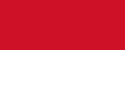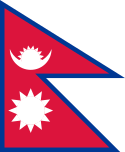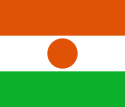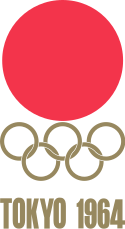Letnie Igrzyska Olimpijskie 1964
| Ten artykuł od 2021-03 wymaga zweryfikowania podanych informacji. |
 | |
| Stolica igrzysk | |
|---|---|
| Liczba ekip | 93 |
| Liczba sportowców | 5151 |
| Liczba konkurencji | 163 w 19 dyscyplinach |
| Otwarcie | |
| Oficjalne otwarcie | cesarz Hirohito |
| Zamknięcie | |
| Przysięga olimpijska | Takashi Ono (sportowcy) |
| Znicz olimpijski | Yoshinori Sakai |
| Stadion | |
XVIII Letnie Igrzyska Olimpijskie (oficjalnie Igrzyska XVIII Olimpiady) odbyły się w 1964 roku w Tokio (Japonia). Były to pierwsze igrzyska olimpijskie rozgrywane na kontynencie azjatyckim. Igrzyska te były jednymi z najlepiej zorganizowanych i najsprawniej przeprowadzanych w dotychczasowej historii. Dzięki zorganizowaniu igrzysk Japonia zerwała z opinią kraju imperialnego, militarnego i zrujnowanego po przegranej wojnie oraz wypromowała się na międzynarodowej arenie jako kraj nowoczesny i atrakcyjny do zagranicznych inwestycji. Przygotowania do igrzysk poprzedzone były modernizacją kraju, co przejawiało się m.in. budową nowych obiektów sportowych, rozbudową metra tokijskiego i uruchomieniem shinkansenu – pierwszej na świecie superszybkej kolei. Igrzyska w „Kraju kwitnącej wiśni” stały się imprezą łączącą tradycje ze współczesnością (zastosowano m.in. najnowsze techniki pomiarów wyników). Były to także pierwsze na świecie igrzyska transmitowane w telewizji w kolorze. Po wykluczeniu przez organizatorów niektórych sportowców z Indonezji oraz Korei Północnej kraje te wycofały swoje reprezentacje. MKOL nie wyraził zgody na występ ekip RPA, co było reakcją na rasistowską (w stosunku do czarnoskórej większości) politykę rządu w Pretorii.
Do programu igrzysk wprowadzono kobiecą i męską siatkówkę oraz narodowy sport Japonii – judo. Lekkoatletyka poszerzona została o dwie nowe konkurencje: Pięciobój lekkoatletyczny (późniejszy Siedmiobój) oraz bieg na 400 metrów (obie wśród kobiet). Igrzyska olimpijskie w Tokio były rekordowe pod względem osiągniętych wyników – pobito 37 rekordów świata i 77 olimpijskich.
Państwa uczestniczące
|
Na Igrzyskach w Tokio zadebiutowało 15 państw: Algieria, Czad, Dominikana, Kamerun, Kongo, Libia, Madagaskar, Malezja, Mali, Mongolia, Nepal, Niger, Senegal, Tanzania (jako Tanganyika) i Zambia (jako Rodezja Północna).
Wyniki
Dyscypliny pokazowe
Statystyka medalowa

| Klasyfikacja medalowa | |||||
| Lp. | Państwo | złoto | srebro | brąz | razem |
|---|---|---|---|---|---|
| 1 | 36 | 26 | 28 | 90 | |
| 2 | 30 | 31 | 35 | 96 | |
| 3 | 16 | 5 | 8 | 29 | |
| 4 | 10 | 22 | 18 | 50 | |
| 5 | 10 | 10 | 7 | 27 | |
| 6 | 10 | 7 | 5 | 22 | |
| 7 | 7 | 6 | 10 | 23 | |
| 8 | 6 | 2 | 10 | 18 | |
| 9 | 5 | 6 | 3 | 14 | |
| 10 | 4 | 12 | 2 | 18 | |
| Zobacz pełną klasyfikację medalową | |||||
Medale zdobyte przez Polaków
Linki zewnętrzne
- 1964 Tokyo Summer Games | Olympics at Sports-Reference.com. sports-reference.com. [zarchiwizowane z tego adresu (2008-09-06)]. (ang.)
Media użyte na tej stronie
Olympic Rings without "rims" (gaps between the rings), As used, eg. in the logos of the 2008 and 2016 Olympics. The colour scheme applied here pertains to the 2016 Olympics in Rio de Janeiro.
Olympic Rings without "rims" (gaps between the rings), As used, eg. in the logos of the 2008 and 2016 Olympics. The colour scheme applied here pertains to the 2016 Olympics in Rio de Janeiro.
Autor: https://phabricator.wikimedia.org/diffusion/GOJU/browse/master/AUTHORS.txt, Licencja: MIT
An icon from the OOjs UI MediaWiki lib.
Autor: https://phabricator.wikimedia.org/diffusion/GOJU/browse/master/AUTHORS.txt, Licencja: MIT
An icon from the OOjs UI MediaWiki lib.
Autor: Scroch, Licencja: CC BY-SA 4.0
National Flag of the People's Republic of Bulgaria (1948-1967). Tha flag has got the coat-of-arms from 1948
Łatwo można dodać ramkę naokoło tej grafiki
The flag of the Dominican Republic has a centered white cross that extends to the edges. This emblem is similar to the flag design and shows a bible, a cross of gold and 6 Dominican flags. There are branches of olive and palm around the shield and above on the ribbon is the motto "Dios,Patria!, Libertad" ("God, Country, Freedom") and to amiable freedom. The blue is said to stand for liberty, red for the fire and blood of the independence struggle and the white cross symbolized that God has not forgotten his people. "Republica Dominicana". The Dominican flag was designed by Juan Pablo Duarte, father of the national Independence of Dominican Republic. The first dominican flag was sewn by a young lady named Concepción Bona, who lived across the street of El Baluarte, monument where the patriots gathered to fight for the independence, the night of February 27th, 1844. Concepción Bona was helped by her first cousin María de Jesús Pina.
Flaga Finlandii
Autor: SanchoPanzaXXI, Licencja: CC BY-SA 4.0
Flag of Spain during the Spanish State. It was adopted on 11 October 1945 with Reglamento de Banderas Insignias y Distintivos (Flags, Ensigns and Coats of Arms Bill)
The Flag of India. The colours are saffron, white and green. The navy blue wheel in the center of the flag has a diameter approximately the width of the white band and is called Ashoka's Dharma Chakra, with 24 spokes (after Ashoka, the Great). Each spoke depicts one hour of the day, portraying the prevalence of righteousness all 24 hours of it.
Flag of Israel. Shows a Magen David (“Shield of David”) between two stripes. The Shield of David is a traditional Jewish symbol. The stripes symbolize a Jewish prayer shawl (tallit).
Variant version of a flag of Japan, used between January 27, 1870 and August 13, 1999 (aspect ratio 7:10).
Flag of the Socialist Federal Republic of Yugoslavia (1946-1992).
The design (blazon) is defined in Article 4 of the Constitution for the Republic of Yugoslavia (1946). [1]
Flag of the Socialist Federal Republic of Yugoslavia (1946-1992).
The design (blazon) is defined in Article 4 of the Constitution for the Republic of Yugoslavia (1946). [1]
Please do not replace the simplified code by a version created with Inkscape or another vector graphics editor❗
Flag of New Zealand. Specification: http://www.mch.govt.nz/nzflag/description.html , quoting New Zealand Gazette, 27 June 1902.
Flaga Rzeczypospolitej Polskiej, a później Polskiej Rzeczypospolitej Ludowej w okresie 1928-1980 ustanowiona rozporządzeniem Prezydenta Rzeczypospolitej z dnia 13 grudnia 1927 r. o godłach i barwach państwowych oraz o oznakach, chorągwiach i pieczęciach, Dz. U. z 1927 r. Nr 115, poz. 980 i potwierdzona dekretem z dnia 9 listopada 1955 r. o znakach Sił Zbrojnych, Dz. U. z 1955 r. Nr 47, poz. 315.
Do odwzorowania barwy czerwonej użyto domyślnego odcienia "vermilion" (#E34234, cynober). Proporcje 5:8 (w dekrecie z 1955 roku błędnie ustalone jako 3:8, skorygowane w obwieszczeniu Prezesa Rady Ministrów z dnia 20 lutego 1956 r. o sprostowania błędu w dekrecie z dnia 7 grudnia 1955 r. o godle i barwach Polskiej Rzeczypospolitej Ludowej oraz o pieczęciach państwowych, Dz.U. z 1955 r. Nr 47 poz. 314).
Flaga Rzeczypospolitej Polskiej, a później Polskiej Rzeczypospolitej Ludowej w okresie 1928-1980 ustanowiona rozporządzeniem Prezydenta Rzeczypospolitej z dnia 13 grudnia 1927 r. o godłach i barwach państwowych oraz o oznakach, chorągwiach i pieczęciach, Dz. U. z 1927 r. Nr 115, poz. 980 i potwierdzona dekretem z dnia 9 listopada 1955 r. o znakach Sił Zbrojnych, Dz. U. z 1955 r. Nr 47, poz. 315.
Do odwzorowania barwy czerwonej użyto domyślnego odcienia "vermilion" (#E34234, cynober). Proporcje 5:8 (w dekrecie z 1955 roku błędnie ustalone jako 3:8, skorygowane w obwieszczeniu Prezesa Rady Ministrów z dnia 20 lutego 1956 r. o sprostowania błędu w dekrecie z dnia 7 grudnia 1955 r. o godle i barwach Polskiej Rzeczypospolitej Ludowej oraz o pieczęciach państwowych, Dz.U. z 1955 r. Nr 47 poz. 314).
Flag of Portugal, created by Columbano Bordalo Pinheiro (1857-1929), officially adopted by Portuguese government in June 30th 1911 (in use since about November 1910). Color shades matching the RGB values officially reccomended here. (PMS values should be used for direct ink or textile; CMYK for 4-color offset printing on paper; this is an image for screen display, RGB should be used.)
Flag of Romania (24 September 1952 - 21 August 1965)
Construction sheet of the Flag of Romania as depicted in Decree nr. 972 from 5 November 1968.
- l = 2/3 × L
- C = 1/3 × L
- S = 2/5 × l
Flag of Senegal
The flag of Navassa Island is simply the United States flag. It does not have a "local" flag or "unofficial" flag; it is an uninhabited island. The version with a profile view was based on Flags of the World and as a fictional design has no status warranting a place on any Wiki. It was made up by a random person with no connection to the island, it has never flown on the island, and it has never received any sort of recognition or validation by any authority. The person quoted on that page has no authority to bestow a flag, "unofficial" or otherwise, on the island.
The national flag of Kingdom of Thailand since September 2017; there are total of 3 colours:
- Red represents the blood spilt to protect Thailand’s independence and often more simply described as representing the nation.
- White represents the religion of Buddhism, the predominant religion of the nation
- Blue represents the monarchy of the nation, which is recognised as the centre of Thai hearts.
Government Ensign of Hungary, flown by state-owned, non-military vessels from 1957 to 1990.
Flaga Wietnamu Południowego
Flag of the Ivory Coast, written by Jon Harald Søby, modified by Zscout370. The colors match to what is reported at http://fotw.vexillum.com/flags/ci.html.
Łatwo można dodać ramkę naokoło tej grafiki
(c) I, Cmapm, CC-BY-SA-3.0
The flag of the Soviet Union (1955-1991) using a darker shade of red.
Flag of Tunisia until 1999.
New Version of ا:Image:Lionflag.svg with a cleaner emblem and the correct ratio.
The flag of the Ethiopian Empire with the Lion of Judah in the center
Flag of Romania (24 September 1952 - 21 August 1965)
Construction sheet of the Flag of Romania as depicted in Decree nr. 972 from 5 November 1968.
- l = 2/3 × L
- C = 1/3 × L
- S = 2/5 × l
Flag of the unified Team of Germany for the Olympic Games, 1960–1968.
trener Piotrowski (pierwszy z lewej) z polskimi lekkoatletkami (od lewej):
- Ewa Kłobukowska
- Maria Piątkowska
- Irena Kirszenstein
- Halina Górecka
- Barbara Sobotta
- Teresa Ciepły
Flag of Liechtenstein 1937—1982.
Flag of Libya between 1951-69, and re-introduced in the interim Constitutional Declaration of 3 August 2011.
The flag of the Kingdom of Libya was described in article 7 of the constitution of 7th October 1951 and officially adopted on 24 December 1951. The relevant passage in the constitution reads as follows (English translation based on The Libyan Flag & The National Anthem, a booklet issued by the Ministry of Information and Guidance of the Kingdom of Libya (year unknown), cited after Jos Poels at FOTW, 27 January 1997)
- The national flag shall have the following dimensions: Its length shall be twice its breadth, it shall be divided into three parallel coloured stripes, the uppermost being red, the centre black and the lowest green, the black stripe shall be equal in area to the two other stripes and shall bear in its centre a white crescent, between the two extremities of which there shall be a five-pointed white star.
- The red shall be sign red, and the green permanent green. The Crescent shall be on the hoistward side of the star, and the centre of the circle of which the crescent forms a part shall be in the centre of the flag. The star shall be in the open end of the crescent and one point of the star shall point to the centre of the circle. The maximum width of the 270 crescent shall equal 1/6th of its outside diameter which is 1/4th of the width of the flag. The distance between the tips of the crescent shall equal that between the uppermost and lowermost point of the star measured along a perpendicular forming the hoistward sides of these two points. The perpendicular shall form a tangent to the outside circumference of the crescent at a point equidistant from the top and bottom of the flag.
The booklet cited by way of illustration of the symbolism of the flag adds: "In the words of a well known Arab poet 'Our deeds are the colour of white, our battles of black, our meadows of green and our swords of red.' [...] The crescent is symbolic of the beginning of the lunar month according to the moslem calendar. It brings back to our minds the story of Hijra (migration) of our prophet Mohammed from his home in order to spread Islam and teach the priciples of right and virtue. The Star represents our smiling hope, the beauty of aim and object and the light of our belief in God, in our country, its dignity and honour which illuminate our way and puts an end to darkness."
But according to Barraclough's Flags of The World (1965): "The black stripe and its charges were from the black flag which the king had adopted when he was proclaimed Amir of Cyrenaica in 1947; the red stripe represents Fezzen, and the green Tripolitania."
Article 3 of the Constitutional Declaration (3 August 2011) reads (unofficial translation from the Arabic):
- "The national flag shall have the following shape and dimensions:"
- "Its length shall be double its width, it shall be divided into three parallel coloured stripes, the uppermost being red, the centre black and the lowest green, the black stripe shall be equal in area to the two other stripes together and shall bear in its centre a white crescent, between the two extremities of which shall be a five-pointed white star. "
State Flag of Venezuela 1930-2006, New flag was introduced 13 March 2006.
Autor: NikNaks - gallery - wikipedia, Licencja: CC BY-SA 3.0
Flag of the Bahamas (1953-1964)
Flag of People's Republic of Mongolia 1945-1992
Logo for the 1964 Summer Olympics in Tokyo
Flag of Italy from 1946 to 2003, when exact colors were specified.
Flag of South Korea (1949-1984)
Autor: Scroch, Licencja: CC BY-SA 4.0
National Flag of the People's Republic of Bulgaria (1948-1967). Tha flag has got the coat-of-arms from 1948
The Canadian Red Ensign, the national flag of Canada from 1957 to 1965. (see: the Canadian Red Ensign on the Register of Arms, Flags and Badges)
Flag of Southern Rhodesia (1964–1965) and Rhodesia (1965–1968)
The flag of Afghanistan between 1931 and 1973 (1311–1352 A.P., 1351–1393 A.H.).
Flag of Mexico (1934-1968)
Flag of Iraq, 1963-1991. Also flag of Syria, 1963-1972.
Flag of Cameroon, 1961-75
Flag of Jamaica. “The sunshine, the land is green, and the people are strong and bold” is the symbolism of the colours of the flag. GOLD represents the natural wealth and beauty of sunlight; GREEN represents hope and agricultural resources; BLACK represents the strength and creativity of the people. The original symbolism, however, was "Hardships there are, but the land is green, and the sun shineth", where BLACK represented the hardships being faced.
Autor: Mysid, Licencja: CC-BY-SA-3.0
Flag of the Republic of Tanganyika
Flag of Northern Rhodesia, 1939–1964
Sable six palets wavy Argent on a Chief Azure an eagle reguardant wings expanded Or holding in the talons a Fish of the second.
1910 Flag of Bermuda (with smaller coat of arms)
Autor: Sodacan, Licencja: CC BY-SA 4.0
Flag of British Guiana (1955–1966)









































































































